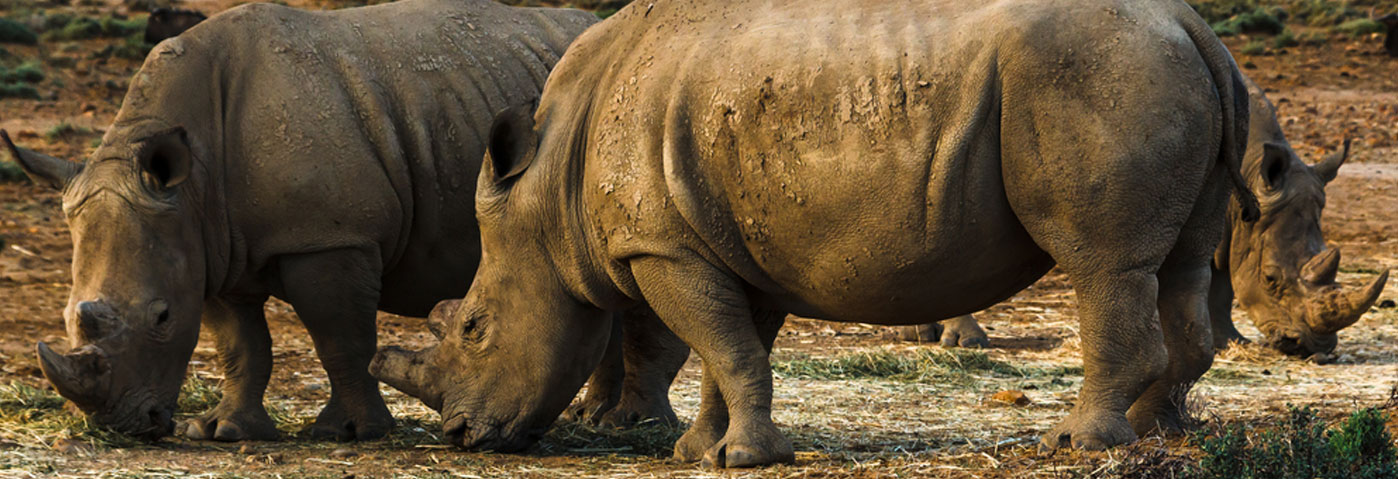Macabre Rhino Massacre
The massive increase in the slaughter of southern Africa’s rhino population over the last seven years or so evokes a profoundly emotional response in many. There are some logical arguments for hunting – in some circumstances. The killing of our rhino population for medicine has no logical basis however and there is no argument that can justify the brutal shooting of these ancient and endangered animals so that their horns can be removed for medicinal use.
Rhino horn in medicine
Contrary to popular belief, rhino horn is very sparsely used as an aphrodisiac. The 16th century Chinese pharmacist, Li Shi Chen, claimed rhino horn could cure snakebites, hallucinations, typhoid, headaches, carbuncles, vomiting, food poisoning, and even, if you can believe it, devil possession.
All very well for the 16th century but today? Despite extensive laboratory testing, rhino horn, which is made mainly of keratin, shows no clinical usefulness whatsoever. While massive doses have slightly reduced fever in lab rats, the concentrations in Chinese medicine are too small by a number of orders of magnitude to have any effect on something the mass of a human being.
So how many have been killed?
Published statistics highlight the alarmingly high increase in rhino poaching South Africa over the last decade. In summary, between 2000 and 2009, 325 rhino were poached. According to The Zoological Society of London, rhino poaching has increased 5,000 % between 2007 and 2012! One rhino was killed in Africa every 11 hours in 2013 – South Africa with 1,004 rhino killed in 2013. These are frightening, and totally unsustainable, statistics. 2014 has seen over 150 rhino killed in South Africa since January…
The sudden increase is hard to pin on one factor but a massive price spike probably provided the greatest incentive. Between 2008 and 2009, the price of ‘legal’ rhino horn with CITES export permits increased to R100 000/kg while illegal horn has passed the R50 000/kg mark. A rhino horn on the black market will go for anything up to R600 000, while in 2006 the horn’s value was no more than R8 000. This, unsurprisingly, provided organised crime with a great incentive to start pillaging our natural heritage.
What’s being done?
There has been a loud and vociferous public outcry over the massive increase in poaching. NGOs, private companies, individuals and state organisations have involved themselves in a plethora of official and not-so official programmes to stop the poaching. These efforts include increased policing, fundraising, social media campaigns and concerned private landowners and communities arresting poachers themselves.
In a South African context, although there have been a number of breakthroughs in the trafficking of rhino horn, there is greater need for increased number of arrests, prosecutions and stiffer sentencing, ideally mandatory imprisonment for rhino offences. The other big argument is over whether the legalisation of international trade in rhino horn should happen or not. No matter the conclusion, when it comes to this rhino war of epic proportions, the most important goal should always be kept in mind: stopping the illegal butchery of one of our iconic beasts.
And every piece of good news should be celebrated: Wilderness has just announced that it is involved in the translocation of black rhino from South Africa to safer havens in Botswana. Read more here…
By James Hendry and Martin Benadie, Wilderness-Safaris
www.wilderness-safaris.com
Find out more about poaching:
www.stoprhinopoaching.com
www.savetherhino.org


